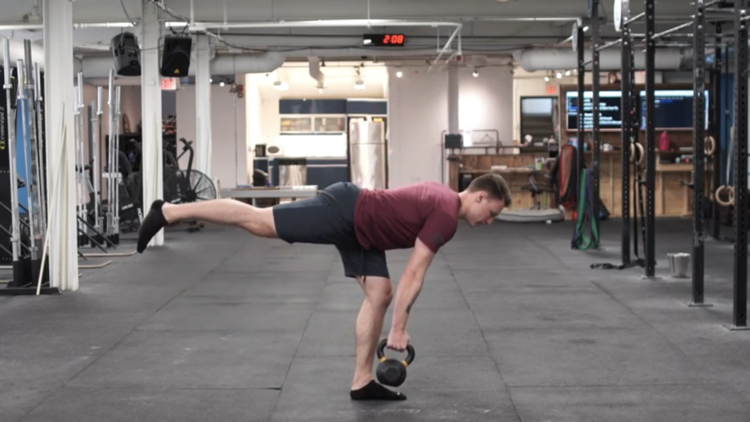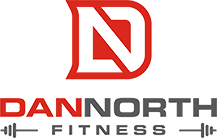Single leg work is underrated, underappreciated, and underutilized in the realms of the strength world.
While most people are concerned with squatting and pulling as much as they can muster, lower unilateral movements seem to be an afterthought in most programs.
In case you need a refresher…
Bilateral = Two-sided movement pattern (squat, bench press, seated row)
Unilateral = One-sided movement pattern (single leg RDL, single arm press)
Why should you do single leg work?
1. Corrects Imbalances
Bilateral movements help you see imbalances. Unilateral movements help you correct them.
Whether you notice yourself favouring one glute over the other during squats or one shoulder during presses, bilateral movements highlight your imbalances and deficiencies.
If you continue to solely focus on bilateral movements, the gap between your imbalances will grow wider.
Unilateral variations allow you to strengthen your weaknesses and strive for more “balance” in your programming.
2. Increases Bilateral Strength
Your bilateral strength increases as a result of your unilateral strength. The stronger you are with single leg work (single leg RDL, split squat, and lunge variations), the stronger you’ll be with your bilateral counterparts (squat and deadlift variations).
3. We Move Unilaterally
Walking, running, jumping, shaking hands…we move unilaterally for the most part.
And still, most people will revolve their programming around all bilateral exercises.
If you want to get better at something, you need to train it. Since we walk with one foot in front of the other, we should train that way (at least sometimes).
2 WAYS TO LEARN THE SINGLE LEG RDL
As with anything new, trying to go from 0-100 is a sure way to fail.
Most tend to fuck up the single leg RDL because they try to go directly to the full variation without ever practicing and understanding the hinging mechanics.
So, if your goal is to do it with flawless technique, break it down and master the movement mechanics step by step.
1. BACK FOOT ON BENCH
This is one of the steppingstones to a full single leg RDL. While this variation technically isn’t a true unilateral movement (since both feet are on a surface), it still allows you to practice the hinging mechanics of the single leg RDL.
How to do it:
- Holding two dumbbells, stand in front of a bench with your back foot elevated on the bench.
- With your front leg slightly bent, hinge forward.
- Keep your hips tall and reach the dumbbells towards your ankles.
- Squeeze your glutes and extend your hips forward as you come back up.
2. BAR GLIDE VARIATION
The bar glide variation teaches balance, linear path, and lat engagement.
Think of this one as a makeshift smith machine. I pulled this out of my ass when my client was making the common mistake of reaching forward while hinging.
Excessive forward reach away from your centre of mass, as you know, puts unwanted strain on the spine.
This method not only teaches a linear path, it reinforces lat engagement so you’re able to maintain a neutral back position while hinging forward.
How to do it:
- Stand holding a barbell in a squat rig and press the bar back against the rig (it should be touching throughout the entire set).
- Keeping your balancing leg slightly bent, hinge forward with your back leg off the floor.
- Glide the bar down and back against the rig as you hinge forward (you should feel your lats engage).
- Pull the bar against the rig as you stand back up.
FULL FREE-STANDING VARIATION
Now we’re off to the races. In this video, you’ll see two variations.
The first is with the back-leg gliding along the floor for balance.
The second is the full single leg variation with the back leg elevated off the floor completely.
How to do it:
- Stand with a kettlebell or dumbbell in your right hand.
- With your left leg slightly bent, hinge forward while reaching back with your right leg (either gliding along the floor or off the floor).
- Quick tip: Your back leg and torso should be one straight line and move as one unit to avoid hyperextending the lower back. Think hinging in unison as opposed to just kicking your leg back.
- Reach towards the inside of your left ankle (remember not to reach forward).
- Squeeze your left glute by applying force through your heel and come back up.
SUMMARY
- Unilateral strength increases your bilateral strength.
- Bilateral movements help you see imbalances.
- Unilateral movements help you correct imbalances.
- Start by elevating your rear leg on a bench to practice single leg hinging mechanics.
- Try gliding a bar along the squat rig to train a linear path and learn to engage your lats.
- Progress to the free-standing variation.





